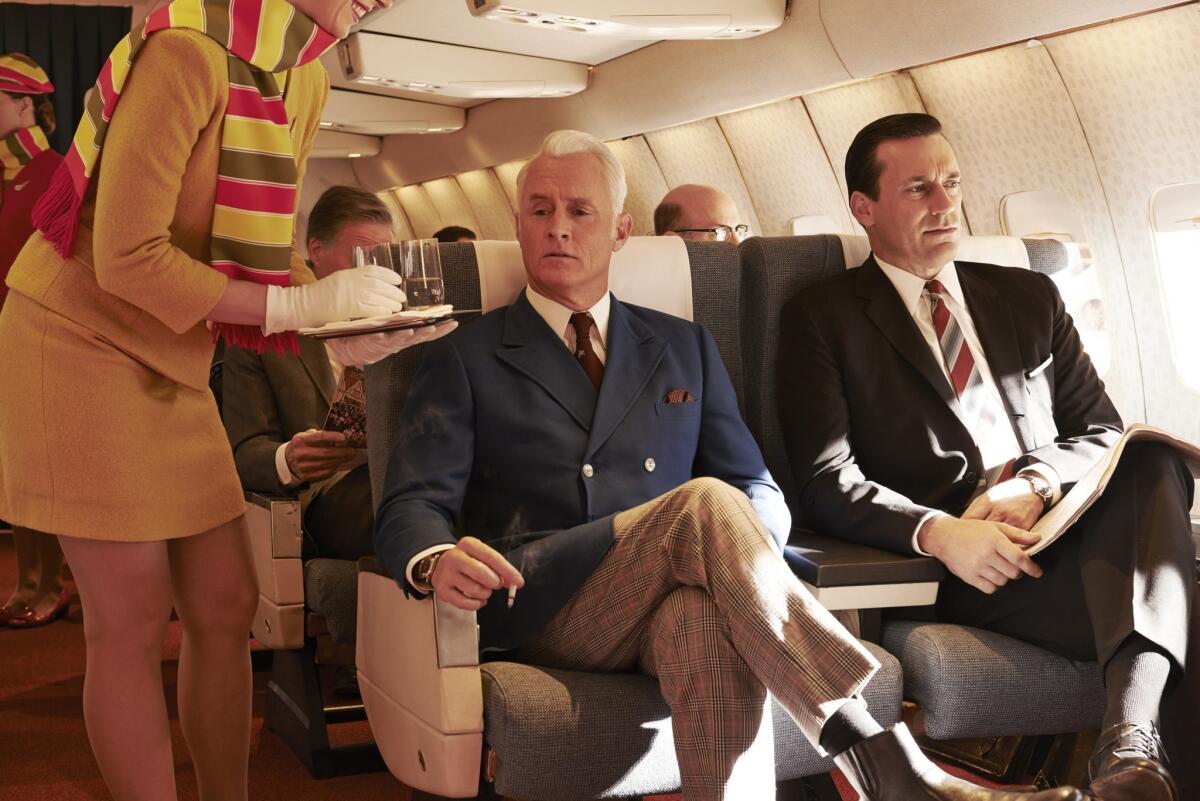In art world, political correctness or blatant insensitivity? You judge
- Share via

G et ready to be offended. The art world has seen its fair share of political correctness controversies since the term entered the popular lexicon close to 25 years ago. Insensitive or oversensitive? Free speech or thought police? You decide.
Los Angeles Times
BANKSY: Animal-rights activists became angry at the street artist for using a live elephant in a 2006 installation in Los Angeles. The artist had acquired permits for the use of the animal but still received criticism from local officials. The Indian elephant in the high-profile exhibit was painted pink and was on display for about six hours at a time over the course of several days.
Rob Griffith / AP
"CARMEN": The Western Australian Opera company has sworn off productions of the popular opera for 2014 to 2016, with local reports saying the company has received a sponsorship deal from a state organization that promotes healthy living. (Bizet's heroine works in a cigarette factory.) Australian politicians have criticized the opera's decision, with Prime Minister Tony Abbott calling it "political correctness gone crazy." (Pictured is the dress rehearsal of "Carmen" at the Opera House in Sydney, Australia, in January 2014.)
Lawrence K. Ho / Los Angeles Times
"CLYBOURNE PARK": A planned production of the Pulitzer Prize-winning drama in Germany was nixed in 2012 over its plans to cast a white actress in blackface makeup. Among those who were upset was the playwright himself, Bruce Norris, who revoked the rights to his play. The drama, a sequel of sorts to "A Raisin in the Sun," addresses issues of race and gentrification and was seen at the Mark Taper Forum in 2012. (Pictured is the dress rehearsal of "Clybourne Park" at the Mark Taper Forum in Los Angeles in January 2012.)
Luis Sinco / Los Angeles Times
VALERY GERGIEV: Gay-rights protestors greeted the famed Russian conductor at performances in New York and London in 2013 to voice their disapproval over his alleged support of Vladimir Putin. The activists maintained that Gergiev was giving tacit approval of Putin's discriminatory policies toward gays; the conductor has vigorously denied this. (Pictured is a moment from Gergiev's stop at the Segerstrom Concert Hall in Costa Mesa in October 2011.)
Alysa Brennan / Civic Light Opera of South Bay Cities
"MISS SAIGON": The Broadway musical ran into trouble in 1991 with protests over the casting of actor Jonathan Pryce as a Eurasian pimp. Asian American activists called for the British actor to be replaced with one of Asian descent. Pryce went on despite the protests and won a Tony Award for his performance. (Pictured is a scene from "Miss Saigon" at the Redondo Beach Performing Arts Center in 2008.)
Ojai Art Center Theater
"OLEANNA": David Mamet's play about political correctness became its own lightning rod when it opened in New York in 1992. The two-character drama follows a young female university student who accuses her professor of sexism and inappropriate behavior. The play, which debuted in the aftermath of the Clarence Thomas hearings, was the subject of intense cultural and media debate and ran for more than a year off-Broadway. (Pictured is a scene from Ojai Art Center Theater's production of "Oleanna" in April 2004.)
Ken Howard
"DER ROSENKAVALIER": Critics in Britain became the target of criticism after a number of reviews of a 2014 "Der Rosenkavalier" production at Glyndebourne singled out mezzo-soprano Tara Erraught for her looks. Many of the reviews focused on the singer's weight with adjectives such as "dumpy," "stocky" and "chubby." Female journalists hit back, saying the male critics were being sexist. (Pictured is San Diego Opera's production of "Der Rosenkavalier" in April 2011.)
ALLEN JONES: The British pop artist has received heat from feminists over the years for his sculptures showing women on all fours and in other sexually submissive positions. Some of his art depicts women as pieces of furniture, like his "Chair" and "Table." Jones has defended his work, saying that "they are not so much about representing woman but the experience of woman, not an illusion."
DAN PARK: An artist in Sweden was sentenced to six months in prison this year for what a court said were his racist depictions of black and Roma, or gypsy, people. The works include pieces showing black men in chains and hanging from gallows. Park has defended his art, saying that they are satirical in nature.
SOUTH BRONX BRONZES: One of the flashpoints of the '90s culture wars, artist John Ahearn's public sculptures depicting black and Latino youths became the target of criticism because the artist was white. The controversy was chronicled by New Yorker journalist Jane Kramer in her book "Whose Art Is It?"
The biggest entertainment stories
Get our big stories about Hollywood, film, television, music, arts, culture and more right in your inbox as soon as they publish.
You may occasionally receive promotional content from the Los Angeles Times.








